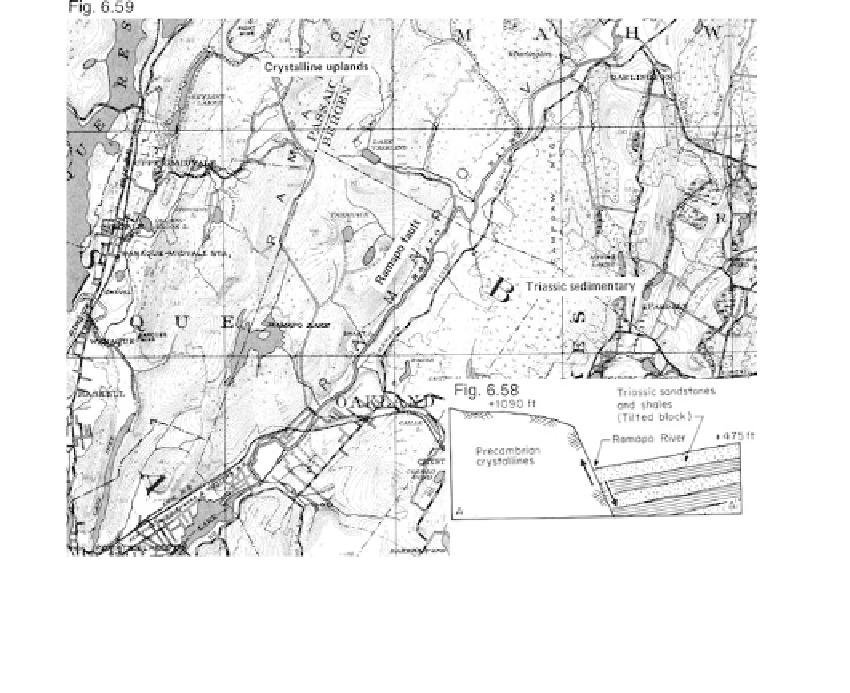Environmental Engineering Reference
In-Depth Information
FIGURE 6.58
Section across the Rampao Fault.
FIGURE 6.59
Topographic expression along the Ramapo fault. (Passaic Country, New Jersey) scale 1 in.
1 mil. See also
Seismic Design Requirements
Seismic design studies require the identification of all faults that may represent an earth-
quake source of significance to construction, the determination of fault characteristics, and
finally the selection of the causative fault.
Significant Characteristics
The fault length is determined and the amount and form of displacement that might occur
are judged. Worldwide evidence indicates that the maximum displacements along faults
during earthquakes is generally less than 15 to 22 ft (5-7 m), and the average displacement
is generally less than 3 ft (1 m) (Sherard et al., 1974) (see
Section 11.3.1).
A most important element is the determination of fault activity, i.e., active, potentially
active, or inactive (see
Tables 11.7
and
11.9).
The U.S. Nuclear Regulatory Commission
(NRC) defines an active fault basically as one having movement within the past 35,000
years or essentially during the Holocene epoch. The definition requires dating the last
movement and determining whether creep is currently occurring. An active or potentially
active fault is termed a
capable fault
and its characteristics become a basis for seismic design
criteria.
Conclusion
From these factors, the earthquake magnitude and duration that might be generated by
fault rupture are estimated. A relationship between earthquake magnitude and fault dis-
placement is given in
Figure 11.26,
and a relationship between length of surface rupture
and magnitude is given in
Figure 11.27.


